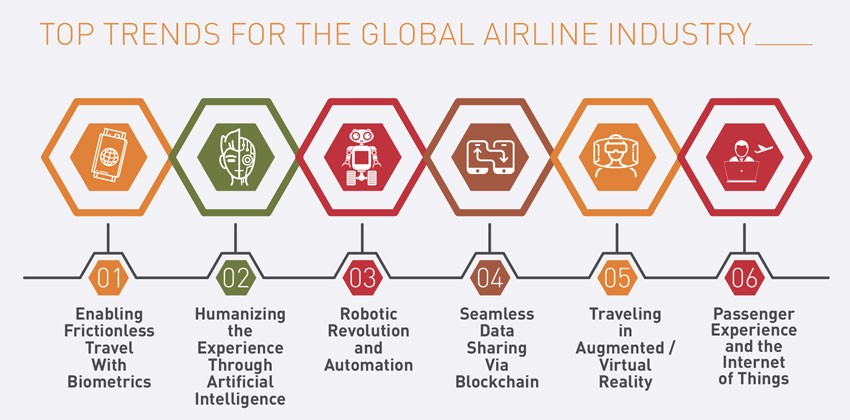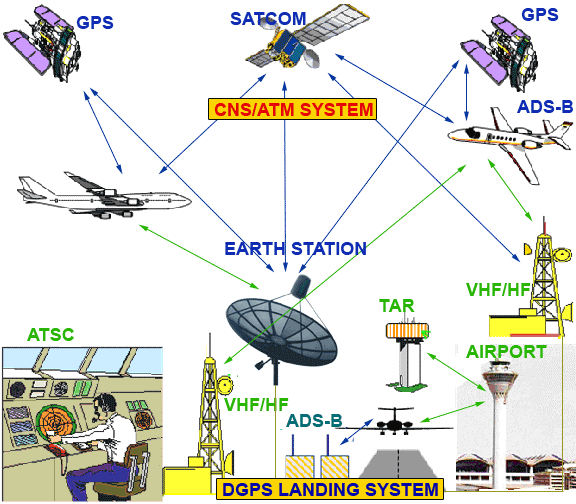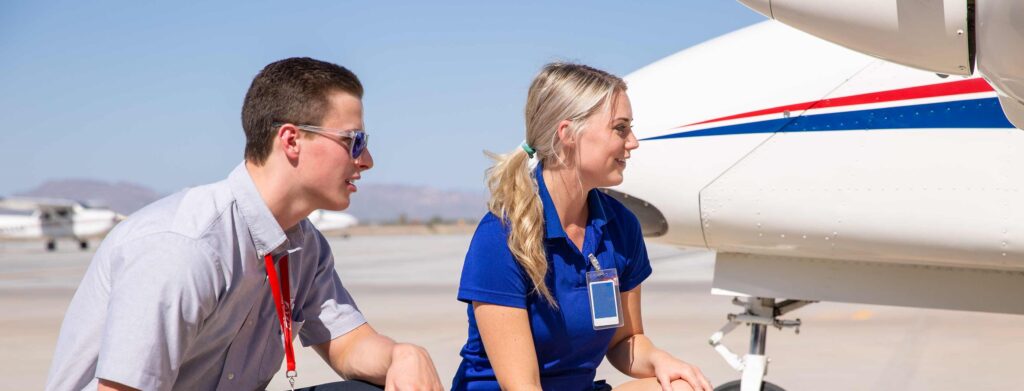
Certificate Course in Aviation Management
✈ Introduction to the Aviation Sector
The aviation industry is a crucial pillar of the global economy, connecting people and businesses across continents. With the rise in air travel, advancements in aviation technology, and the expansion of airports worldwide, the demand for skilled aviation professionals is at an all-time high.
Aviation management is a dynamic field that encompasses airport operations, airline management, ground services, air traffic control, aviation safety, air cargo, and customer service. This sector offers exciting career opportunities in both domestic and international markets.
TRAINING COURSE
CERTIFICATE COURSE IN AVIATION MANAGEMENT

COURSE DURATION : ONE YEAR
MODULES
Certificate Course in Aviation Management
✈ Introduction to the Aviation Sector
The aviation industry is a crucial pillar of the global economy, connecting people and businesses across continents. With the rise in air travel, advancements in aviation technology, and the expansion of airports worldwide, the demand for skilled aviation professionals is at an all-time high.
Aviation management is a dynamic field that encompasses airport operations, airline management, ground services, air traffic control, aviation safety, air cargo, and customer service. This sector offers exciting career opportunities in both domestic and international markets.
🎯 Career Paths in Aviation Management
Graduates of this course can explore diverse career opportunities in the aviation sector:
1. Airline Operations
- Flight Dispatcher
- Airline Customer Service Executive
- Airline Revenue Manager
- Flight Operations Coordinator
- Airline Sales and Ticketing Executive
2. Airport Management
- Airport Operations Manager
- Terminal Manager
- Airport Security Supervisor
- Airport Customer Relations Officer
3. Ground Handling & Passenger Services
- Baggage Handling Supervisor
- Ramp Operations Coordinator
- Passenger Assistance Executive
4. Aviation Safety & Security
- Aviation Safety Officer
- Security Screening Supervisor
- Emergency Response Manager
5. Air Cargo & Logistics
- Cargo Handling Supervisor
- Freight Coordinator
- Logistics and Supply Chain Manager
6. Air Traffic Management
- Air Traffic Controller
- Flight Coordination Officer
📚 Training Contents – One-Year Course
This Certificate Course in Aviation Management is structured into two semesters and provides comprehensive knowledge and practical training in aviation operations, airline management, airport services, and industry regulations.
📌 Semester 1 (6 Months) – Fundamentals of Aviation
This semester focuses on building a strong foundation in aviation industry concepts and operations.
Module 1: Introduction to the Aviation Industry
- History and Evolution of Aviation
- Structure of the Aviation Industry
- Major Airlines and Airports Worldwide
- The Role of the International Civil Aviation Organization (ICAO)
Module 2: Airport & Airline Operations
- Airport Infrastructure and Facilities
- Functions of an Airport Management Team
- Airline Business Models (Low-cost carriers vs. Full-service airlines)
- Passenger Handling & Check-in Procedures
Module 3: Air Traffic Management & Control
- Air Traffic Control (ATC) Basics
- Flight Scheduling and Planning
- Runway Operations & Aircraft Movements
Module 4: Aviation Safety & Security Regulations
- Global Aviation Safety Standards
- Emergency Procedures and Crisis Management
- Aviation Security Screening and Passenger Safety
Module 5: Customer Service in Aviation
- Importance of Hospitality in Aviation
- Effective Communication with Passengers
- Managing Difficult Passengers and Conflict Resolution
Module 6: Soft Skills & Professional Etiquette
- Grooming and Professionalism in Aviation
- Body Language & Confidence Building
- Interview Preparation and Resume Writing
📌 Semester 2 (6 Months) – Advanced Aviation Management
This semester delves into specialized aviation management areas, preparing students for leadership roles in the industry.
Module 7: Airline Marketing & Revenue Management
- Airline Branding and Marketing Strategies
- Pricing Strategies & Yield Management
- Loyalty Programs & Customer Retention
Module 8: Airport Ground Handling & Services
- Aircraft Turnaround Management
- Ramp Handling & Loading Procedures
- Baggage Handling and Cargo Operations
Module 9: Aviation Law & International Regulations
- Civil Aviation Laws and Compliance
- International Aviation Treaties
- Passenger Rights and Airline Responsibilities
Module 10: Air Cargo & Freight Management
- Logistics and Air Freight Operations
- Cargo Documentation & Customs Regulations
- Temperature-Sensitive and Dangerous Goods Handling
Module 11: Crisis Management & Emergency Procedures
- Dealing with In-Flight Emergencies
- Airport Emergency Planning
- Crisis Communication in Aviation
Module 12: Internship & Practical Training
- Real-world exposure through airport and airline internships
- Hands-on experience in airline operations, ticketing, cargo handling, and airport security
🎓 Placement & Career Opportunities
The Certificate in Aviation Management course prepares students for high-demand job roles in the aviation industry.
1. Industry Partnerships & Internship Programs
- Collaborations with leading airlines, airports, and aviation service providers.
- Internship opportunities at major domestic and international airports.
2. Job Placement Assistance
- Resume-building workshops & interview preparation
- Mock interview sessions with aviation industry recruiters
- Networking with aviation professionals for career growth
3. Global Career Prospects
Graduates can explore job opportunities worldwide in airlines, airport operations, aviation logistics, and air cargo management.
🎯 Why Choose This Course?
✔ Industry-Relevant Curriculum – Designed by aviation professionals with the latest industry trends.
✔ Practical Training & Internships – Hands-on experience in airport and airline operations.
✔ Job-Oriented Program – Focused on real-world aviation management skills.
✔ Globally Recognized Certification – Enhances job prospects in domestic and international markets.
✔ Flexible Learning – Includes classroom sessions, online learning, and industry visits.


Digital Transformation in Aviation
🚀 10-Day Training Program on
Digital Transformation in Aviation
📅 Duration: 10 Days (Full-Time / Part-Time Options)
📍 Mode: Online / Classroom / Hybrid
🎯 Target Audience: Aviation Professionals, Airline & Airport Executives, IT Specialists, Engineers, Aviation Consultants
📌 Day-wise Course Breakdown
🔹 Day 1: Introduction to Digital Transformation in Aviation
- Definition & Importance of Digital Transformation in Aviation
- Current Challenges & Opportunities in Digital Aviation
- Key Technologies Driving Digitalization in Airlines & Airports
- Case Study: How Leading Airlines Have Embraced Digitalization
🛠 Technologies Covered:
- AI & Machine Learning
- Internet of Things (IoT)
- Big Data & Predictive Analytics
🔹 Day 2: Aircraft Connectivity & Communication
- Satellite Communication (SATCOM) & High-Speed In-Flight Connectivity
- 5G & Next-Gen Air-to-Ground (ATG) Networks
- Automatic Dependent Surveillance-Broadcast (ADS-B)
- Controller-Pilot Data Link Communications (CPDLC)
🛠 Technologies Covered:
- SATCOM, 5G, ADS-B, CPDLC
🔹 Day 3: AI & Big Data in Aviation
- Predictive Maintenance using AI
- Data-Driven Flight Operations Optimization
- AI-Based Personalization for Passenger Experience
- Case Study: How AI is Redefining Airline Operations
🛠 Technologies Covered:
- AI, Machine Learning, Big Data Analytics
🔹 Day 4: Smart Airports & Internet of Things (IoT)
- IoT in Baggage Handling & Passenger Tracking
- RFID for Smart Luggage Management
- Biometric Boarding & Self-Service Check-ins
- Smart Airport Infrastructure: Sensors & AI-based Security
🛠 Technologies Covered:
- IoT, RFID, AI-based Security, Biometric Authentication
🔹 Day 5: Digital Twin & Predictive Analytics in Maintenance
- Digital Twin for Aircraft Performance Simulation
- AI-Driven Predictive Maintenance for Aircraft Health Monitoring
- Real-Time Data Monitoring for Aircraft Performance Optimization
🛠 Technologies Covered:
- Digital Twin, AI, Predictive Analytics
🔹 Day 6: Blockchain & Cybersecurity in Aviation
- Blockchain for Secure Ticketing & Passenger Identity Management
- Cybersecurity Threats & Prevention Strategies in Digital Aviation
- Use of Blockchain in Aircraft Maintenance Records & Fraud Prevention
🛠 Technologies Covered:
- Blockchain, Cybersecurity Tools, Encryption Techniques
🔹 Day 7: Augmented Reality (AR) & Virtual Reality (VR) in Aviation
- AR for Aircraft Maintenance & Training Simulations
- VR for Pilot & Crew Training
- AR Navigation Assistance for Airports & Passengers
🛠 Technologies Covered:
- AR, VR, Simulation Software
🔹 Day 8: Digital Passenger Experience & Contactless Travel
- AI Chatbots & Virtual Assistants for Customer Support
- Personalized Travel Experiences Using AI & Big Data
- Touchless Passenger Journey: Biometrics & Digital Payments
🛠 Technologies Covered:
- AI Chatbots, Biometric Authentication, Contactless Payments
🔹 Day 9: Sustainability & Green Aviation Technologies
- AI-Driven Flight Route Optimization for Lower Fuel Consumption
- Sustainable Aviation Fuel (SAF) & Carbon Emission Reduction
- Digital Technologies for Environmental Monitoring in Aviation
🛠 Technologies Covered:
- AI, SAF, Green Technologies
🔹 Day 10: Implementation Strategy & Future Trends
- Steps to Implement Digital Transformation in Airlines & Airports
- Future Trends in Digital Aviation & Emerging Technologies
- Final Assessment & Certification
🛠 Technologies Covered:
- AI, Blockchain, IoT, Digital Twin, Smart Technologies
🎯 Key Benefits of This Training
✅ Master modern aviation technologies (AI, IoT, Blockchain, Digital Twin)
✅ Understand digital transformation strategies for aviation companies
✅ Gain hands-on knowledge of data-driven decision-making in aviation
✅ Enhance career prospects with certification in digital aviation
Understanding Digital Technologies
Internet of Things ( IoT )
Cloud Computing
5G in Aviation
Blockchain Technology
Augmented Reality and Virtual Reality
Artificial Intelligence
Beacons technology
Robotics
Biometrics
Wearable technology
Big Data & Analytics
Mobile solutions
Smart Airport | Airport 4.0
Digital Innovations & Strategy
Digital Business Transformation in Airline Industry
TRAINING COURSE --- FANS CNS ATM

CNS ATM FANS Training Course
FANS CNS - ATM INFRASTRUCTURE
Training Program on Aviation FANS CNS-ATM Infrastructure (15 Days)
Course Overview
This 15-day intensive training program is designed to provide aviation professionals with a deep understanding of Future Air Navigation System (FANS) and Communication, Navigation, and Surveillance – Air Traffic Management (CNS-ATM) Infrastructure. Participants will learn about the latest technologies in aviation, operational procedures, system integration, and real-world applications of CNS-ATM systems.
📌 Training Structure & Course Modules
🛫 Week 1: Introduction to Aviation Technologies & CNS-ATM Fundamentals
Day 1: Overview of Modern Aviation Technologies
- Evolution of Air Traffic Management (ATM)
- Need for Digital Transformation in Air Navigation
- Role of ICAO, FAA, and Eurocontrol in ATM Development
Day 2: Fundamentals of CNS-ATM Infrastructure
- Introduction to CNS-ATM Framework
- Shift from Ground-Based to Satellite-Based Air Traffic Management
- Key Challenges and Global Implementation
Day 3: Communication (C) in CNS-ATM
- CPDLC (Controller-Pilot Data Link Communication) – Replacing voice-based ATC communication
- SATCOM (Satellite Communication) – Ensuring long-range connectivity
- AIDC (ATS Interfacility Data Communication) – Coordination between ATC centers
Day 4: Navigation (N) in CNS-ATM
- Performance-Based Navigation (PBN) and GPS Integration
- Required Navigation Performance (RNP) and Area Navigation (RNAV)
- Benefits of Satellite-Based Navigation over Traditional Methods
Day 5: Surveillance (S) in CNS-ATM
- ADS-B (Automatic Dependent Surveillance – Broadcast) – Real-time aircraft tracking
- ADS-C (Automatic Dependent Surveillance – Contract) – Used in oceanic airspace
- Multilateration and Radar Systems in ATM
🛫 Week 2: Operational Aspects & Air Traffic Management
Day 6: Integration of CNS in Air Traffic Control (ATC)
- How ATC utilizes CNS technologies
- Data Exchange & Coordination between pilots and controllers
- Case Studies: CNS-ATM Implementation in Major Airports
Day 7: Flight Planning & Route Optimization with CNS-ATM
- Trajectory-Based Operations (TBO) for more efficient routing
- Real-time Weather & Traffic Data Analysis
- Tools for Air Traffic Flow Management (ATFM)
Day 8: Future Air Navigation System (FANS)
- FANS 1/A vs. FANS 2/B: Understanding the differences
- Implementation of FANS in Oceanic & Remote Airspaces
- How FANS improves aircraft fuel efficiency and reduces delays
Day 9: Cybersecurity & Safety in CNS-ATM
- Risks in Digital ATC Systems & Cyber Threats in CNS-ATM
- Measures to Prevent GPS Spoofing & Communication Failures
- Regulatory Frameworks for Air Traffic Security
Day 10: Advanced Air Traffic Management (ATM) Technologies
- Conflict Detection & Resolution Mechanisms
- Integration of AI & Machine Learning in ATC Decision Making
- Future Technologies: Space-Based ADS-B & AI-Powered Air Traffic Flow Control
🛫 Week 3: Practical Applications, Case Studies & Future Trends
Day 11: Case Studies of CNS-ATM Implementation
- Case Study 1: Implementation of CNS-ATM in the United States (FAA’s NextGen System)
- Case Study 2: SESAR (Single European Sky ATM Research) Program in Europe
- Case Study 3: Asia-Pacific & Middle East CNS-ATM Deployment Challenges
Day 12: Hands-on Training with CNS-ATM Simulations
- Live CPDLC & ADS-B Demonstrations
- Using Flight Management Systems (FMS) with CNS-ATM
- Simulating Emergency & Contingency Operations in ATM
Day 13: Regulatory Compliance & Certification Requirements
- ICAO Standards & Recommended Practices (SARPs)
- FAA & EASA Certification for CNS-ATM Systems & Avionics
- Compliance with International CNS-ATM Guidelines
Day 14: Industry Trends & the Future of CNS-ATM
- AI & Big Data in Air Traffic Management
- Integration of UAS (Drones) into CNS-ATM Systems
- Future of Urban Air Mobility (UAM) & Advanced ATM
Day 15: Final Assessments & Certification Ceremony
- Final Exam & Case Study Presentations
- Feedback & Q&A with Industry Experts
- Certificate Distribution & Closing Remarks
🎯 Training Benefits
✅ Comprehensive Understanding of CNS-ATM & FANS Infrastructure
✅ Industry Insights from Aviation & ATC Experts
✅ Enhancement of Aviation Career Prospects & Skillset
✅ Understanding of ICAO, FAA & EASA Regulatory Standards
✅ Improved Operational Efficiency in Air Navigation Services
✅ Certification Recognized by Aviation Training Authorities
✅ Networking Opportunities with ATC & Airline Professionals
🎓 Who Should Attend?
This program is ideal for:
✔ Air Traffic Controllers (ATC Professionals)
✔ Aviation Engineers & Avionics Experts
✔ Pilots & Flight Operations Personnel
✔ Aviation Regulators & Government Officials
✔ Airline Network & Flight Dispatch Professionals
✔ IT & Cybersecurity Experts in Aviation
📌 Placement & Career Opportunities
After completing this training, participants can pursue careers in:
- Air Traffic Control Centers (ATC)
- Aviation Regulatory Bodies (FAA, EASA, ICAO, DGCA, etc.)
- Airline Operations & Dispatch Departments
- Airport Management & CNS-ATM Infrastructure Planning
- Avionics & Aerospace Engineering Companies
- Aviation IT & Cybersecurity Firms
🚀 Ready to Join the Future of Air Traffic Management?
This 15-day CNS-ATM Infrastructure Training is designed to equip aviation professionals with the latest skills in air traffic management technologies. Gain hands-on experience and become a certified expert in aviation digital transformation!
TRAINING WORKSHOPS
AVIATION TECHNOLOGIES

UNDERSTANDING FLIGHT OPERATIONS
UNDERSTANDING FREE FLIGHT
AERONAUTICAL TELECOMMUNICATIONS ( ATN )
UNDERSTANDING AERONAUTICAL INFORMATION
UNDERSTANDING AERONAUTICAL CHARTS
UNDERSTANDING INSTRUMENT PROCEDURES
UNDERSTANDING DIGITAL AVIONICS SYSTEMS
AVIATION METEOROLOGY
GLOBAL POSITIONING SYSTEMS ( GPS )
GLOBAL NAVIGATION SATELLITE SYSTEMS ( GNSS )
CONTROLLER PILOT DATA LINK COMMUNICATIONS ( CPDLC )
UNDERSTANDING AIRSPACE PLANNING
FLIGHT MANAGEMENT & GUIDANCE SYSTEM ( FMGS )
UNDERSTANDING AIR TRAFFIC MANAGEMENT ( ATM )
UNDERSTANDING PERFORMANCE BASED NAVIGATION ( PBN )
UNDERSTANDING AREA NAVIGATION ( RNAV )
NEXT GENERATION AIR TRANSPORTATION SYSTEM ( NGATS )
SERVICE ORIENTED ARCHITECTURE ( SOA )
AIRPORT CDM ( COLLABORATIVE DECISION MAKING )
AERONAUTICAL RISK MANAGEMENT
SAFETY MANAGEMENT SYSTEM ( SMS )
ICT TRENDS IN AVIATION
CLOUD COMPUTING APPLICATIONS IN AVIATION
CYBER SECURITY IN AVIATION
AVIATION BUSINESS & MARKET ENVIRONMENT
AVIATION TRAINING COURSES
GROUND PREPARATION EXAM CLASSES

STUDENT PILOT LICENCE ( SPL ) EXAM PREPARATION

Ground classes of Student Pilot Exam conducted by DGCA india
SPL
stands for Student Pilot’s License. SPL is the preliminary license one needs to achieve before getting a PPL and CPL. An oral examination shall be conducted by a representative of the DGCA on the following subjects for the issuance of an SPL
Ground Classes Training Content for Student Pilot Exam (DGCA India)
The Student Pilot License (SPL) is the first step toward becoming a pilot in India. The Directorate General of Civil Aviation (DGCA) conducts the exam, and ground classes prepare students with essential theoretical knowledge. Below is a detailed training syllabus covering all required subjects:
📌 Course Duration: 1-2 months (flexible based on student progress)
📌 Mode: Classroom & Online (Hybrid Model)
📌 Eligibility: 10th pass (minimum), Age 16+ years
✈️ Training Modules for DGCA SPL Ground Classes
1. Air Regulations (DGCA Rules & Guidelines)
- Introduction to DGCA & Civil Aviation Regulations
- Rules of the Air (ICAO & DGCA guidelines)
- Airspace Classification in India
- Licensing Requirements for Pilots
- Flight Time Limitations & Rest Periods
- Airport Security & Safety Regulations
2. Air Navigation (Understanding Flight Paths)
- Basics of Latitude, Longitude & Time Zones
- Maps, Charts & Air Navigation Aids
- Magnetic & True Heading Calculations
- Effects of Wind on Flight Path
- Basics of Flight Planning
3. Aviation Meteorology (Weather & Flying Conditions)
- Understanding Weather Reports (METAR, TAF)
- Types of Clouds & Their Impact on Flight
- Wind, Turbulence & Thunderstorms
- Icing & Its Effect on Aircraft Performance
- Interpretation of Weather Charts & Forecasts
4. Aircraft & Engines (General & Technical)
- Basic Components of an Aircraft
- Types of Aircraft & Their Classifications
- Understanding Aircraft Controls & Flight Instruments
- Basic Principles of Aircraft Engines
- Propeller & Jet Engine Fundamentals
- Fuel Systems & Aircraft Maintenance Basics
5. Radio Telephony (RT) & Communication
- Basics of Aviation Communication
- Standard Phraseology & Radio Calls
- Understanding ATC (Air Traffic Control) Procedures
- Emergency Communication Procedures
- Phonetic Alphabet & Standard Aviation Abbreviations
6. Human Performance & Limitations
- Basics of Human Physiology in Aviation
- Effects of Altitude on the Human Body
- Fatigue, Stress & Pilot Decision Making
- Vision & Spatial Disorientation in Flight
7. Flight Planning & Performance
- Pre-Flight Checks & Aircraft Documentation
- Takeoff & Landing Performance Calculations
- Weight & Balance Considerations
- Fuel Planning & Endurance Estimation
8. Basic Air Law & Emergency Procedures
- Passenger Safety & Cabin Crew Coordination
- Emergency Landing & Ditching Procedures
- Handling In-Flight Emergencies (Engine Failure, Fire, etc.)
- Evacuation Protocols & First Aid Basics
🛫 Additional Training & Mock Exams
- Regular Practice Tests & Mock Exams based on DGCA syllabus
- DGCA Exam-Oriented Revision Sessions
- Live ATC Communication Practice
- Guest Lectures by Experienced Pilots
🎯 Outcome of the Training:
- Thorough knowledge to pass the DGCA SPL Exam
- Strong foundation for further pilot training (PPL, CPL, ATPL)
PRIVATE PILOT LICENCE ( PPL ) EXAM PREPARATION

Private Pilot License Exam
📌 Ground Classes Training Content for Private Pilot License (PPL) Exam – DGCA India
The Private Pilot License (PPL) is the next step after obtaining the Student Pilot License (SPL) and allows pilots to fly non-commercial aircraft. The Directorate General of Civil Aviation (DGCA) conducts the exam, and ground classes prepare students with in-depth theoretical knowledge.
✈️ Course Overview
- 📅 Duration: 2-3 months (Flexible)
- 🎓 Mode: Classroom & Online (Hybrid Model)
- 📌 Eligibility: 10+2 with Physics & Mathematics, Age 17+ years
- 📜 Certification: Prepares students for the DGCA PPL Exam
📖 Training Modules for DGCA PPL Ground Classes
1. Air Regulations (DGCA & ICAO Guidelines)
- Introduction to DGCA & ICAO (International Civil Aviation Organization)
- Rules of the Air & Airspace Classification
- Licensing & Flight Crew Regulations
- Aircraft Registration, Documentation & Logbooks
- Airworthiness Requirements & Maintenance Regulations
2. Air Navigation (Flight Planning & Navigation Aids)
- Latitude, Longitude & Time Zone Calculations
- Principles of Dead Reckoning & Visual Navigation
- Use of Aeronautical Charts (VFR & IFR Charts)
- Radio Navigation Aids (VOR, NDB, GPS Basics)
- Effects of Wind & Drift on Flight Path
- Cross-Country Navigation & Estimation of Fuel Requirements
3. Meteorology (Weather & Its Impact on Flying)
- Understanding Weather Reports (METAR, TAF, ATIS)
- Cloud Types & Their Effect on Aviation
- Wind Shear, Turbulence & Thunderstorms
- Icing, Fog & Visibility Concerns
- Weather Charts Interpretation & Pre-Flight Weather Briefing
4. Aircraft General & Technical Knowledge
- Basic Aerodynamics & Flight Principles
- Aircraft Structure & Control Surfaces
- Aircraft Engines & Propellers (Piston & Jet)
- Fuel Systems, Electrical & Hydraulic Systems
- Aircraft Instruments & Flight Data Recording
- Weight & Balance Considerations
5. Flight Performance & Planning
- Performance Charts & Takeoff/Landing Distance Calculation
- Weight & Balance Computations
- Fuel Planning & Endurance Estimation
- Aircraft Loading Limits & Center of Gravity Calculations
- Effects of Altitude, Temperature & Wind on Aircraft Performance
6. Radio Telephony (RT) & Communication
- Aviation Phraseology & Standard ATC Communications
- VHF Radio Communications (Tower, Ground, Departure, Approach)
- Emergency Procedures & Mayday Calls
- Understanding NOTAMs (Notices to Airmen) & AIP (Aeronautical Information Publication)
- Cross-Country Flight Communication & Clearance Procedures
7. Human Performance & Limitations
- Effects of Altitude on the Human Body (Hypoxia, Decompression Sickness)
- Pilot Fatigue, Stress & Decision-Making Factors
- Spatial Disorientation & Optical Illusions in Flight
- Effects of Alcohol, Drugs & Medication on Performance
- Cockpit Resource Management (CRM)
8. Air Law & Emergency Procedures
- Passenger Safety & Emergency Equipment
- In-Flight Emergency Handling (Engine Failure, Fire, Bird Strike)
- Forced Landing Procedures
- Evacuation, Survival & First Aid
- Post-Accident Reporting & Investigation Basics
✈️ Additional Training & Mock Exams
- 📌 Regular Practice Tests & Mock Exams based on DGCA PPL syllabus
- ✈️ Flight Simulator Sessions for Navigation & RT Communication
- 🛫 Guest Lectures by Experienced Pilots & Aviation Experts
- 📑 DGCA Exam Revision & Quick Recap Sessions
🎯 Outcome of the Training:
✔ Thorough preparation for the DGCA PPL Exam
✔ Strong foundation for Commercial Pilot License (CPL) training
✔ Confidence in air navigation, regulations & meteorology.
COMMERCIAL PILOT LICENCE ( CPL ) EXAM PREPARATION

📌 Ground Classes Training Content for Commercial Pilot License (CPL) Exam
DGCA India
The Commercial Pilot License (CPL) is essential for pilots who wish to fly for commercial airlines or charter operations. The Directorate General of Civil Aviation (DGCA) in India conducts the CPL exam, and ground school training is a crucial part of preparing for it.
✈️ Course Overview
- 📅 Duration: 4-6 months
- 🎓 Mode: Classroom & Online (Hybrid Model)
- 📌 Eligibility: 10+2 with Physics & Mathematics, Minimum 18 years
- 📜 Certification: Prepares students for the DGCA CPL Exam
📖 Training Modules for DGCA CPL Ground Classes
1. Air Regulations (DGCA & ICAO Guidelines)
- DGCA & ICAO Regulations (Rules of the Air, Airspace Classification)
- Aviation Law & International Conventions
- Aircraft Acts & Rules
- Licensing & Crew Regulations
- Flight Duty Limitations & Rest Requirements
2. Air Navigation (Advanced Flight Planning & Navigation Aids)
- Advanced Dead Reckoning & Visual Navigation
- Radio Navigation Aids (VOR, NDB, DME, GPS, RNAV, INS, ILS)
- Flight Planning with Fuel Calculation & Route Optimization
- Great Circle & Rhumb Line Navigation
- Effect of Wind, Drift, and Altitude on Flight Path
- Flight Management Systems (FMS) & Autopilot
3. Meteorology (Advanced Weather & Flight Safety)
- Upper Air Meteorology & Jet Streams
- Weather Systems & Global Climatic Effects
- Thunderstorms, Icing, Turbulence & Their Impact on Flight
- Aviation Weather Forecasts (TAF, METAR, SIGMET)
- Tropical Cyclones, Squall Lines & Microbursts
- Interpretation of Weather Radar & Satellite Images
4. Aircraft General & Technical Knowledge (Advanced Aircraft Systems)
- Jet Engine Theory & Performance
- Turboprop & Turbojet Operations
- Electrical, Hydraulic & Pneumatic Systems
- Flight Control Systems & Fly-By-Wire Technology
- Aircraft Pressurization & Air Conditioning Systems
- Glass Cockpit & Digital Avionics
5. Flight Performance & Planning (Jet & Multi-Engine Aircraft)
- Takeoff & Landing Distance Calculations
- Weight & Balance Calculations for Multi-Engine Aircraft
- Fuel Consumption & Range Estimation
- Climb, Cruise & Descent Performance
- One Engine Inoperative (OEI) Performance Considerations
6. Radio Telephony (RT) & Communication
- Advanced ATC Communication & RT Procedures
- Standard ICAO Phraseology
- Emergency & Mayday Calls
- Radar Vectoring & Transponder Codes
- International Flight Communication & Clearance Procedures
7. Human Performance & Limitations
- Physiological Effects of High-Altitude Flying
- Pilot Fatigue Management & Circadian Rhythm
- Spatial Disorientation & Optical Illusions
- Stress Management & Crew Resource Management (CRM)
- Effects of Alcohol, Drugs & Medications on Pilots
8. Air Law & Emergency Procedures
- Passenger Safety & Security Measures
- Emergency Descent & Forced Landing Procedures
- Firefighting & Smoke Evacuation Procedures
- Evacuation, Survival & First Aid Training
- Post-Accident Investigation & DGCA Reporting Guidelines
🛫 Additional Training & Mock Exams
- 📝 Weekly Practice Tests & Mock DGCA Exams
- 🛩️ Flight Simulator Training (Navigation, RT & Instrument Procedures)
- 📢 Guest Lectures by Experienced Airline Captains & DGCA Officials
- 📖 Quick Revision & DGCA Exam Strategy Sessions
🎯 Outcome of the Training:
✔ Comprehensive knowledge to clear DGCA CPL Ground Exams
✔ Advanced expertise in air navigation, aircraft systems & regulations
✔ Understanding of multi-engine flight planning & emergency procedures
✔ Strong preparation for airline pilot selection & interviews.

